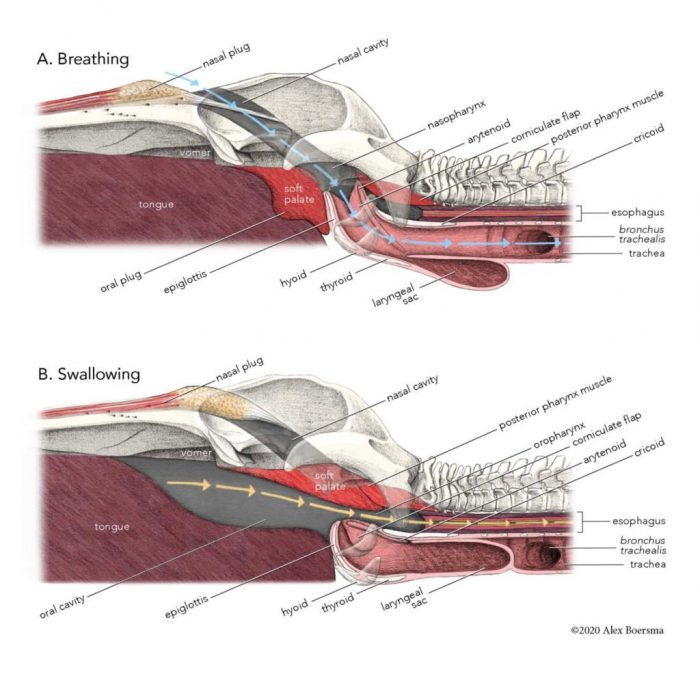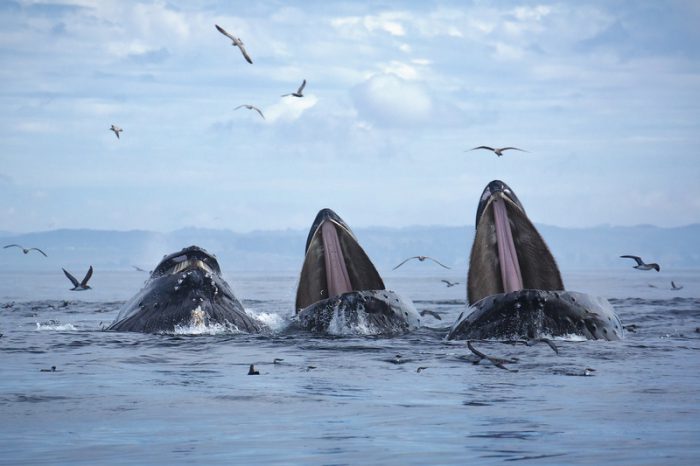They are the largest animals on the planet. One, the mighty blue whale, is the largest animal that has ever lived.
Baleen whales are the lords of the ocean.
And as mammals—animals whose relatives are all based on the land—the dominance of the baleen whale is a bit strange. Because they must breathe air, they are at an immediate disadvantage compared to basically every other creature in the sea. No matter how well adapted they are to the water, at some point, sooner or later, all whales must go to the surface to fill their lungs with air.
And there's another issue, too. Keeping the water out of their lungs.
That might seem easy enough. After all, if you swim yourself, you know that mammals (like us!) can swim and dive into water and easily keep it from entering our mouths. But, what if you tried to swallow something in the water while swimming? That would be a bit tricky.
And yet, this is something that baleen whales do everyday as they eat krill and other small creatures. In one massive gulp—called lunge feeding—these beasts swallow about five hundred bathtubs worth of water. Wow! And despite all of that, they are able to keep water out of their lungs.
How do they do it? A new study out of the University of British Columbia has found the answer!
The perfect plug

These illustrations show the differences in the whale's anatomy when it is breathing (top—the blue arrows represent air) and swallowing (bottom—the yellow arrows are the food and water going to the stomach). (Alex Boersma/Current Biology)
In a study that examined fin whales, biologists found that the whales have an oral plug that blocks the path to the lungs. As the diagram above shows, this fatty tissue sits at the back of the mouth. As the whale is breathing (top illustration), it seals the back of the mouth and clears the path from the blowhole down to the lungs. Ahhh, fresh air!
But when the whale takes in water while feeding and starts to swallow (bottom illustration), the opposite happens. The oral plug flips back and up, sealing off the pipe just below the blowhole, and opening up the path to the esophagus (tummy time!). And something else happens as well.
The pressure from swallowing pushes the whale's huge tongue backward, which in turn pushes against something called the epiglottis. We have one of these, too, by the way, and it does the same thing—blocks off the windpipe so that food and drink doesn't enter the lungs.
In whales though, the combination of this oral plus and tongue pushing on the epiglottis during swallowing allows these creatures to keep even very large amounts of water out of their airways. Though this study was only carried out on fin whales (the second largest whale species), it is highly likely that this is how other filter feeding baleen whales (such as humpbacks, rights, bowheads, and blues) all function.
It really is an incredible bit of evolution. Something that let some curious bear-like mammals from tens of millions of years ago eventually evolve into the largest animals to ever live on Earth.
 When baleen whlaes, such as these humpbacks, feed, they swallow immense amounts of water. (ID 76587623 © Chase Dekker | Dreamstime.com)
When baleen whlaes, such as these humpbacks, feed, they swallow immense amounts of water. (ID 76587623 © Chase Dekker | Dreamstime.com)









